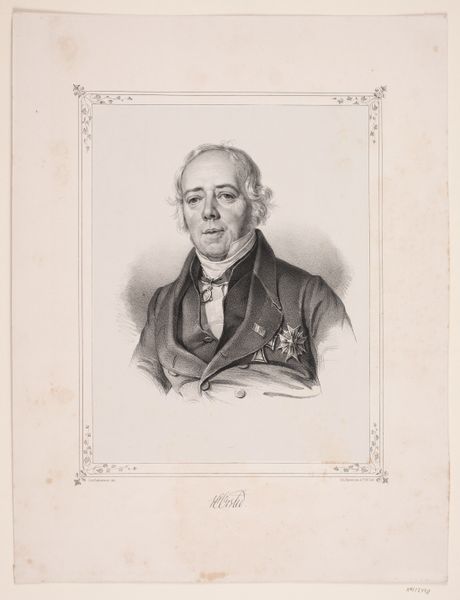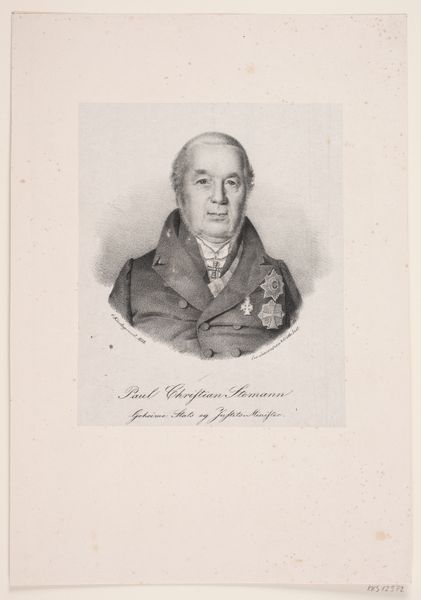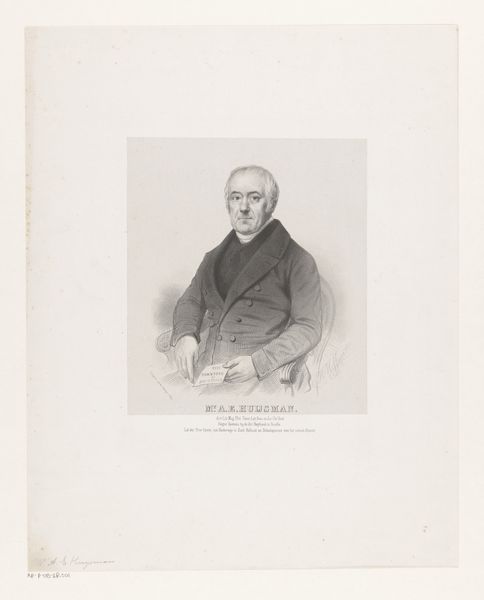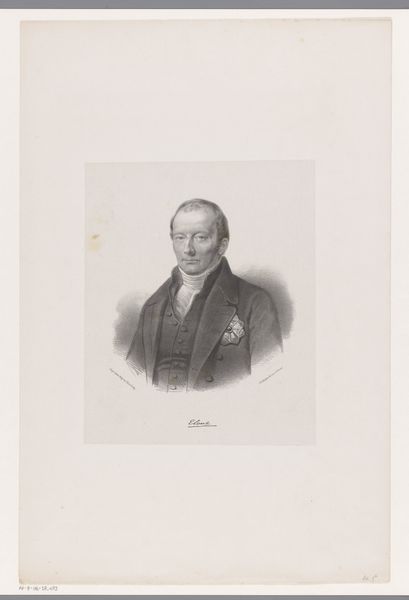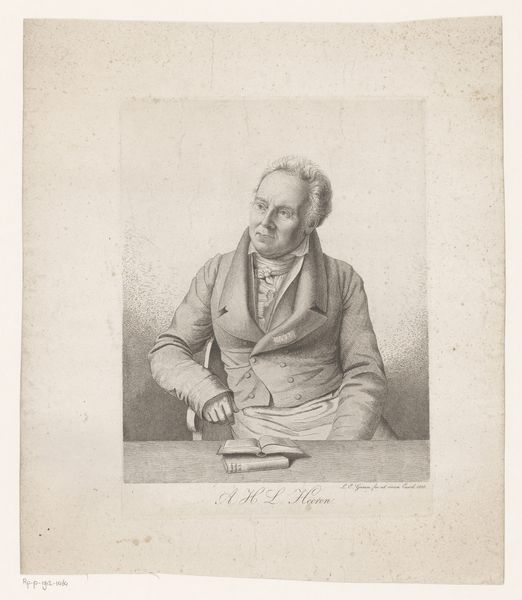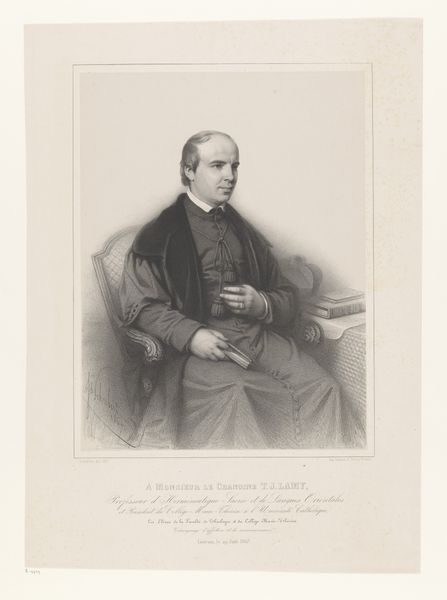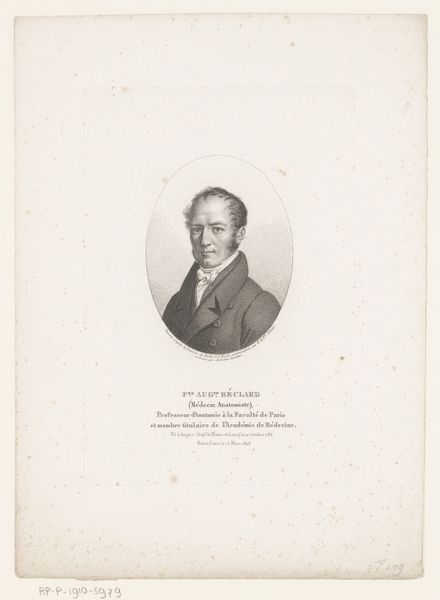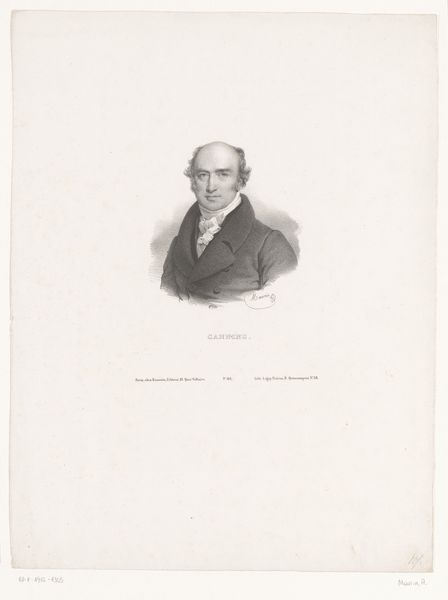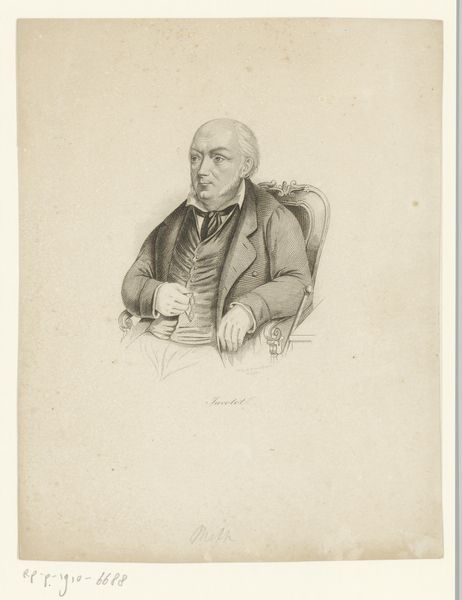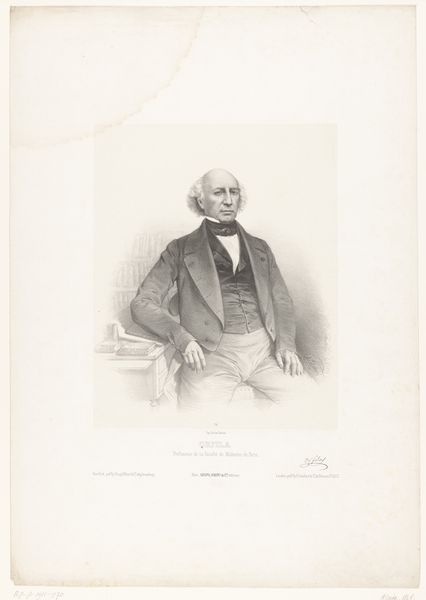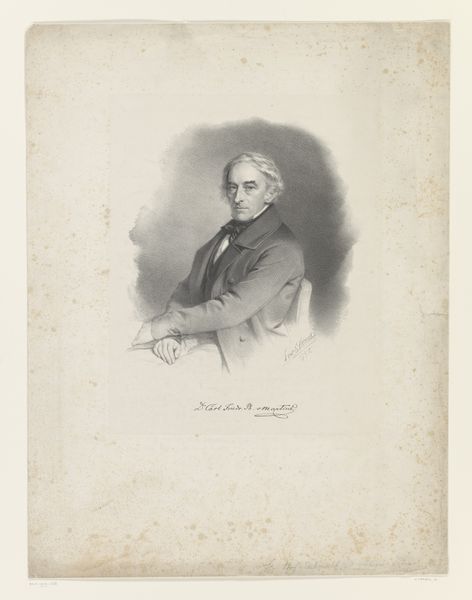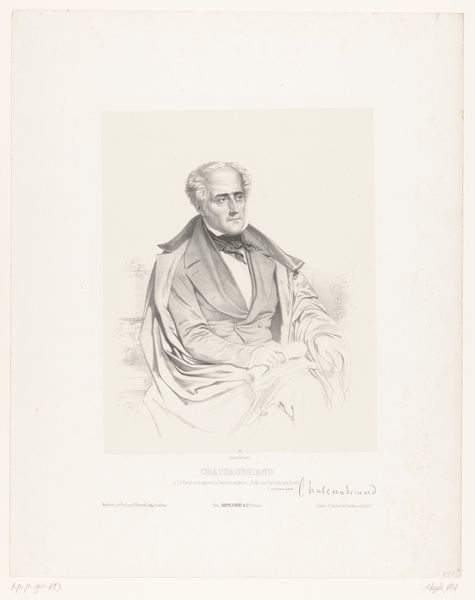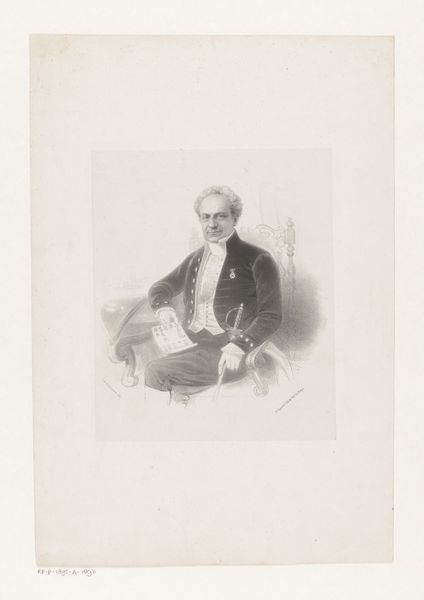
engraving
#
portrait
#
book
#
historical photography
#
portrait reference
#
romanticism
#
academic-art
#
engraving
Dimensions: height 525 mm, width 398 mm
Copyright: Rijks Museum: Open Domain
Curator: Well, hello there. Have you had a chance to see the portrait of Mattheus Ignatius van Bree? Charles Baugniet completed this engraving in 1840, and it's now part of the Rijksmuseum's collection. Editor: What strikes me immediately is the almost melancholic air around him. It's in his eyes, that soft, almost watery gaze. He looks like he's pondering some profound, unspoken question. Is that just me? Curator: No, I think you’re onto something. Van Bree, as you can probably see from the implements beside him, was himself a painter and an important figure in the art world. He was director of the Royal Academy of Fine Arts in Antwerp. So, in a way, this portrait encapsulates a moment of reflection on a life dedicated to art. The weight of that responsibility, perhaps? Editor: Exactly! It's interesting to think about how being in charge, holding all that institutional power, might affect an artist's spirit. There's a bit of stuffiness, for sure – that cravat looks rather tight – but that sense of pensive self-awareness elevates it beyond just a formal depiction. Curator: It does present an interesting paradox. On the one hand, it's a very official image, marking him as a man of stature. But, at the same time, there is a clear attempt to show a bit of the inner person, not just the public persona. The palette and books signal his intellectual and artistic sides. Editor: I notice the very controlled technique, the meticulous details of the engraving... it almost reinforces that feeling of control, doesn’t it? Very different, perhaps, from his own artistic creations. I'm curious about the contrast. Was it a statement about him as an academician versus his more intimate artwork? Curator: Perhaps. Portraits, especially commissioned ones, often served multiple purposes. They needed to capture a likeness but also convey status and character. It's a fascinating tightrope walk, and here, I think Baugniet has balanced those elements skillfully. The textures achieved by the engraving, almost photographic in their detail, really contribute to the character's presence. Editor: Right, I hadn't thought of it that way. This has changed how I read the whole thing. Suddenly he looks a lot warmer, as though there's a great man here after all! Curator: Well, these images, if they do nothing else, let us stop and appreciate not just how the artists of the past lived but what their modern audience might feel or assume. Thanks for helping reveal a lot. Editor: Thank you, likewise. I shall carry my sense of his gentle introspection along, it gives me pause.
Comments
No comments
Be the first to comment and join the conversation on the ultimate creative platform.
